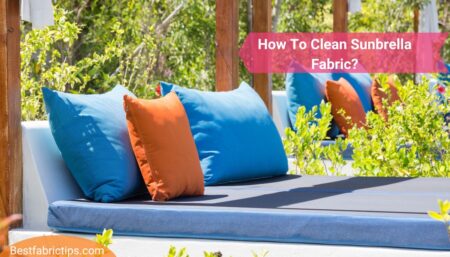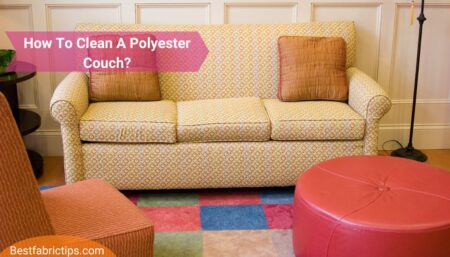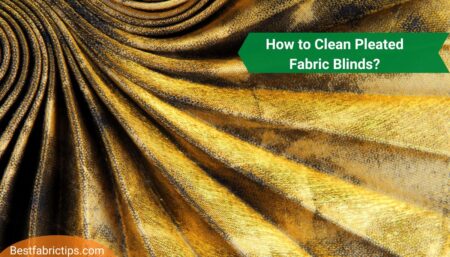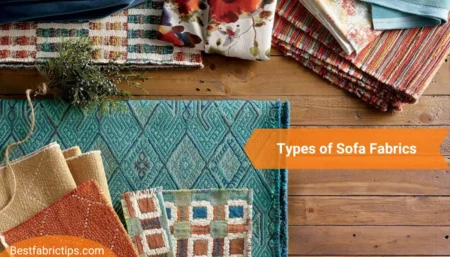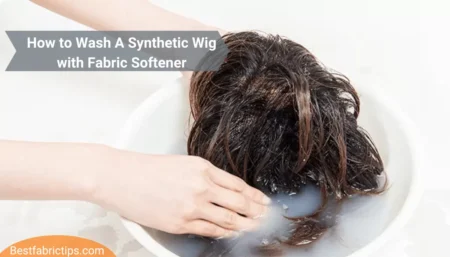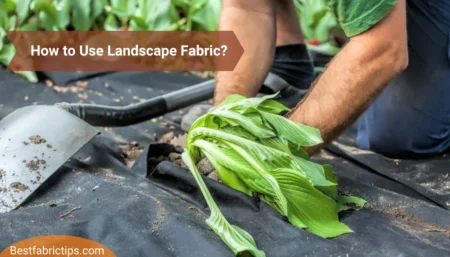Determining how much fabric you’ll need is critical to reupholster a sofa or sewing a cover for a sectional or couch. Many elements must be taken into account, including the size of the sofa, its form, and the quantity of cushions. Depending on the fabric you pick, particularly if it is velvet or has a huge design, the amount of fabric necessary for your reupholstered couch or slipcover may also vary. Shopping for fabric is the first step in any upholstery job, but understanding how much fabric you’ll need is critical to the process.
Make sure to include yardage for a skirt or button tufting in your overall cost of materials. Add 1.5 yards for a couch skirt and 2 yards for button tufting to your fabric measurements. Increase your total yardage by at least 2 yards in order to match patterns or to accommodate nap cutting arrangements. Large flowers, geometrics, and some stripes may need to be matched, but velvet, corduroy, and chenille will need to be cut to match the nap or texture of the fabric.
How to estimate fabric to Reupholster a Sofa or a Couch?
Upholstering furniture is a large undertaking that is more difficult to complete than it appears. Estimating upholstery fabric may be difficult, and it is easy to make mistakes that might lead to the failure of a project.
Take a measurement across the back of your couch. Typically, this dimension will fall between 61 and 85 inches in length.
You should count your pillows, which should include both upper and lower cushions. You might have as many as six cushions on your sofa, depending on the model.
A 6-foot-long, 2-cushion couch will require around 12 yards of cloth as a starting point for your estimation. For a 7-foot couch, increase the length to 14 yards. For a couch with more than two cushions, estimate an extra 1.5 yards of fabric per cushion; for example, a 7-foot-long, six-cushion sofa would require around 20 yards of fabric total.
What sort of sofa or sectional do you want to reupholster?
A strong construction ensures that the sofa will survive for a long time. Softwoods, such as pine are inexpensive, but they may distort or wobble after five years of exposure to moisture. More expensive hardwoods (such as kiln-dried oak, ash, or beech, for example) are more long-lasting. Avoid using frames made of particleboard, plastic, or metal since they are likely to distort and shatter over time. Legs should be a part of the frame or attached with screws or dowels to keep them in place.
Polyurethane foam is a low-cost cushion filler that is also simple to maintain. However, the more durable, high-density kind might feel rigid, whereas the softer, low-density type degrades more quickly when subjected to frequent usage. While somewhat more costly, high-resilient (HR) foam is more pleasant and long-lasting than standard foam.
A low-cost alternative is polyester fiber, which is likewise flattening fast. Goose-and duck-feather fillings are soft and comfortable, although they tend to clump together. The best of the best is goose down (the soft undercoat of the bird) combined with feathers. The combination is deliciously plump, but it is also pricey (nearly twice the price of foam) and demands regular care; cushions must be fluffed on a regular basis. A down-polyfiber combination is less expensive, but it flattens out quickly.
What sort of fabric should you choose for the reupholstery of a sofa?
It’s past time to update the appearance of your sofa. Your choice to reupholster a sofa has been made, but what aspects of the process should you consider while choosing a fabric?
Some considerations to keep in mind are as follows:
Durability
When selecting a fabric for your couch, it is important to consider how much wear it will receive. Will the sofa be used on a daily basis? Will your children use your sofa as a wrestling mat to practice their moves? Will Fido attempt to dig a hole through the cushion to the center? If you answered “yes,” you’ll need a long-lasting cloth. There are a few factors to look for to ensure long-term durability:
- On the abrasion test, look for the number of rubs that were completed. For domestic use, a fabric should have a thread count of 15,000 or above.
- The durability of woven textiles outlasts that of printed materials.
- Fabrics with tight weaves are ideal for this project.
- Fabrics composed of olefin (such as Revolution!) are known to be extremely long-lasting.
Harmony
Before you choose a fabric for your couch frame, think about the design of the frame. Using a classic couch frame as an example, a traditional fabric will instantly look nice with the frame.
Textiles are available in a plethora of designs. Fabrics might have a casual, elegant, formal, or playful appearance. Consider whether or not your choice will complement your present décor.
Keep in mind the magnitude of the design when selecting a cloth with a pattern. It is possible that a large scale design would be overwhelming in a small area or that the pattern would not focus on your sofa in an attractive manner. It’s possible that a little design in a huge room will have the opposite effect.
If your sofa is going to be in a room that gets a lot of sunlight, fade resistance will be vital to consider.
If you live in a humid climate, look for fabrics that are resistant to mildew.
As a result of its lint-free nature and lack of attraction to dust, microfiber is good for certain allergy sufferers.
These are simply some thoughts to ruminate over. In the end, your house is a reflection of your personality. Relax and put your faith in yourself. You will make the right option for you and your family. I am confident in your abilities.
You may pick from a wide variety of upholstery fabrics and alternatives on the market. If you’re completely new to upholstery, take a look at the many varieties of upholstery fabric and figure out which one would work best for your house. When you go to buy upholstered furniture or intend to reupholster existing furniture, you will find a variety of upholstery fabrics. Every sort of upholstery fabric has its own personality and impact. Having enough knowledge about different upholstery fabrics might assist you in making an informed selection.
Types of Fabric
Leather
For good reason, leather is one of the most well-known forms of upholstery. It’s not only a natural fabric, but it’s also stain resistant, making it a great long-term investment piece. It’s also simple to keep clean, using only a wet cloth or leather-specific cleanser. It’s also a decorative chameleon that may fit in with either a classic or more modern décor style. In a home library or a dark and comfortable lounge, we enjoy a traditional leather armchair. Distressed leather is especially good for pets since it hides any scratches caused by their claws. The only disadvantage is that this type of upholstery can be costly.
Wool
Wool is a natural fabric that may also be used for upholstery of a sofa. We’re fascinated by this warm and silky winner’s cozy implications. Wool is frequently combined with a synthetic fiber to make it more practical and easy to clean. Wool has the advantages of being robust, wrinkle-free, soil-resistant, and non-fading. Is there a bonus? Even better, it’s inherently fire-resistant and eco-friendly. Wool, like leather, is, nevertheless, a bit on the pricey side. Wool is ideal for a sectional couch in your main living area, as well as extra-comfy toss pillows.
Acetate
Acetate is a synthetic fabric that was created to mimic the feel and appearance of silk. It dries quickly and resists shrinking, plus it doesn’t pill, which is when the fabric’s fibers break apart. This fabric also has a lovely shine and a gloss to it, which we like.
Acetate has a number of drawbacks, including being a weak fabric that wrinkles quickly and requiring dry cleaning. It hangs and drapes beautifully, making it ideal for curtains or window coverings. Just make sure you don’t use this upholstery on a couch that will be subjected to a lot of use. However, acetate is a beautiful fabric to use for reupholstery of a sofa, as it gives a luxurious look to the furniture.
Jute
Jute is a natural fabric originally used for rope and matting that is native to India and Bangladesh. Unfortunately, jute is prone to wrinkling when washed, otherwise it is one of my favorite fabrics for upholstery! It’s also a little harsh to the touch, so it’s probably not the best choice for covering furniture. On the plus side, it gives a great textured aspect to furniture, and it would look great on an ottoman, rug, or accent pillows. For attractive neutral décor schemes, it goes nicely with other natural materials like leather or wood.
Conclusion
If you don’t want to spend the money on a professional to reupholster your sectional couch, you can do it yourself. If you follow the methods indicated in this article, you will almost certainly be able to complete the task at hand. Your sectional couch will be reupholstered and look like new in as little as a day or two.




